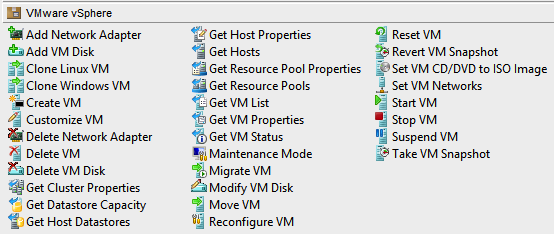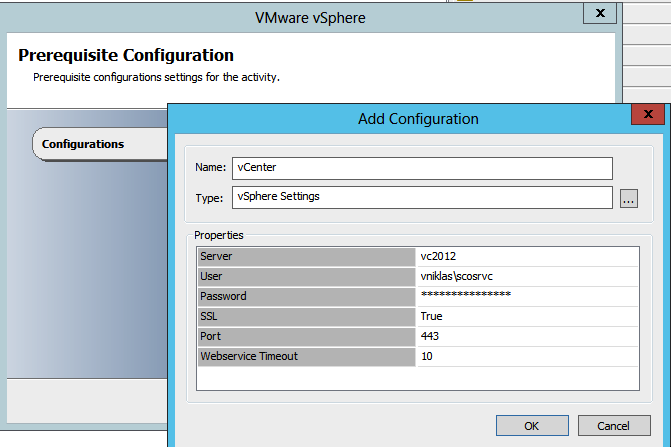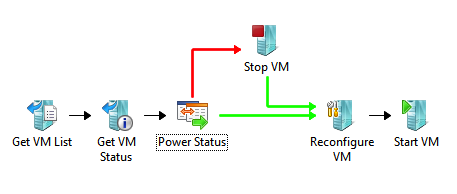When to select SC Orchestrator over vCenter Orchestrator

I got a question from a customer why they should choose System Center Orchestrator instead of vCenter Orchestrator.
Both products work in the automation field and can do quite much, as they both are extendable and you can develop add-ons, the possibilities are almost endless!
In the case of the System Center Orchestrator, it is included in the System Center suite so if you already use some of the components and have the licenses in place then you can start automating a lot more.
In the case of vCenter Orchestrator, it is included in the vCenter license that you buy in your vSphere suite.
Both orchestrators are very easy to start working with as they are gui based. the vCenter Orchestrator integrates into the vSphere client and from there you can easily start the wanted workflow. With both you can create workflows/runbooks and let users connect to a web console to kick of the action.
Example of a runbook from SCO
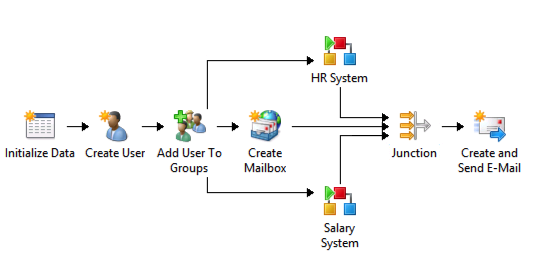
Example of a workflow from vCO

In both there are possibilities to automate for example Active Directory and users. Onboarding processes when new employees start is an example of an process that often involves quite some manual intervention and benefits from automation. Giving end users and system owners the possibility to create and manage their own virtual machines through a web portal is another example that would offload the IT departments technicians busy day. The list of examples goes on and on…
System Center Orchestrator Architectural overview:
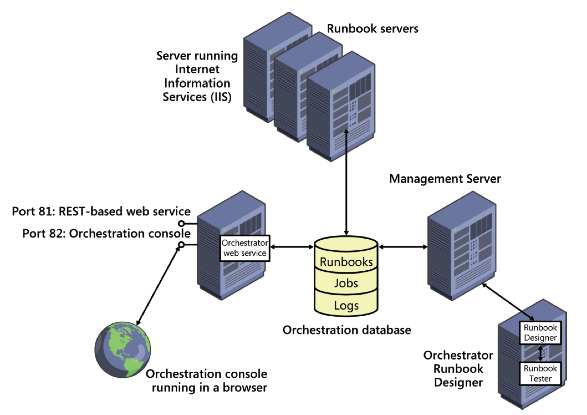
vCenter Orchestrator Architectural overview:
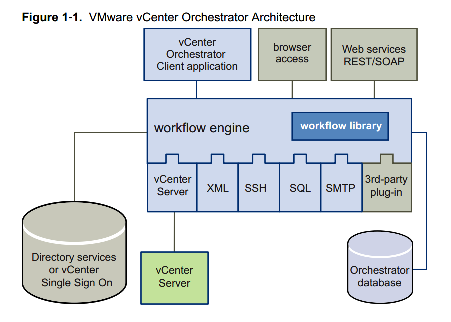
Comparison table:
| SCO | VCO | |
| Licensing | License required only for endpoints being managed. No additional System Center licenses are needed for management servers or SQL Server technology. |
vCenter standard license, no extra cost |
| Web console | Yes | Yes |
| Third Party Plugin/IP | Yes | Yes |
| Custom Plugin/IP development | Yes | Yes |
| Manage VMware vSphere | Yes | Yes |
| Manage System Center | Yes | No (not out of the box,requires quite a bit of customization) |
| Workflow/Runbook templates | No | Yes |
| Import/Export Workflow/Runbooks | Yes | Yes |
Conclusion
So what orchestrator should you go with? Well it depends of course and here is my opinions,
If you have a VMware environment but run mostly Windows Servers and Microsoft applications and already have one or more System Center roles deployed the favor is in the SCO hand as SCO integrates so well with the Microsoft software using the supported Integration Packs and you also can with the VMware IP manage the vSphere environment. The rich amount of activities that the Integration Packs consists of makes it easy to start automating and quickly expand the scope and get some serious automation results in the whole stack! The SCO community helps you a lot when creating runbooks and that with the possibility to import a whole set of runbooks from other IT Pro´s can get your automation goal to be achieved quickly.
If you have a VMware environment and do not use any System Center roles and also have a more diverse load of VM´s with different operating systems, but still want to start automating your environment I would recommend the vCO. One big advantage that the vCO has is that it comes with a wide range of workflows already created and ready to be customized which helps you in the speed to automate.
From a licensing perspective it should be noted that as described in the table, you must have a System Center license on every physical device you plan to automate with System Center Orchestrator. On the virtualization hosts you would use the Windows Datacenter and System Center Datacenter licenses that gives you unlimited VM´s that you can manage. On single physical hosts you must use a System Center Standard license, but as I said above, if you already have another System Center Role you probably have the licensing in place :-). vCenter Orchestrator comes with the vCenter license and there is no extra licensing cost for managing single hosts or Active Directory.
